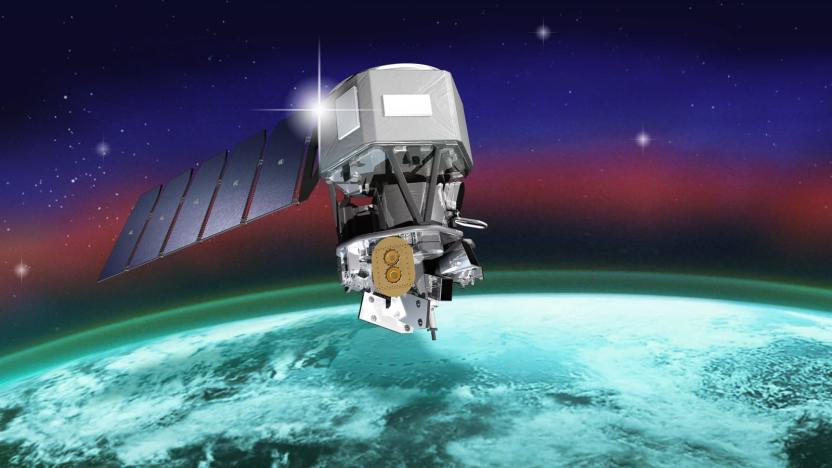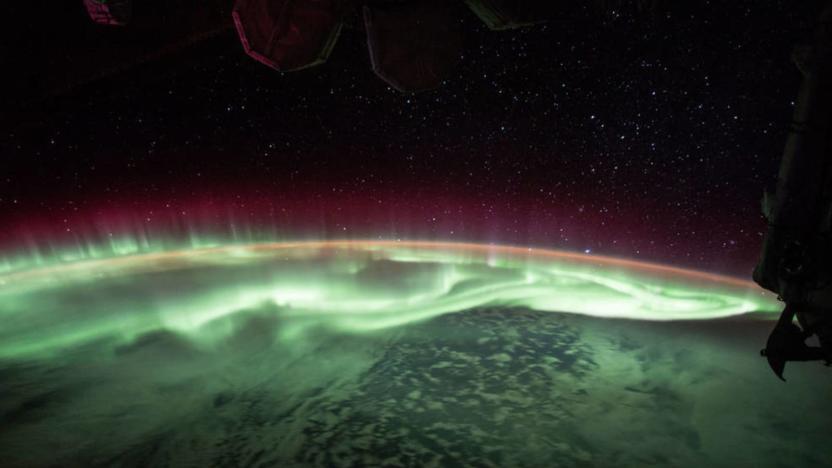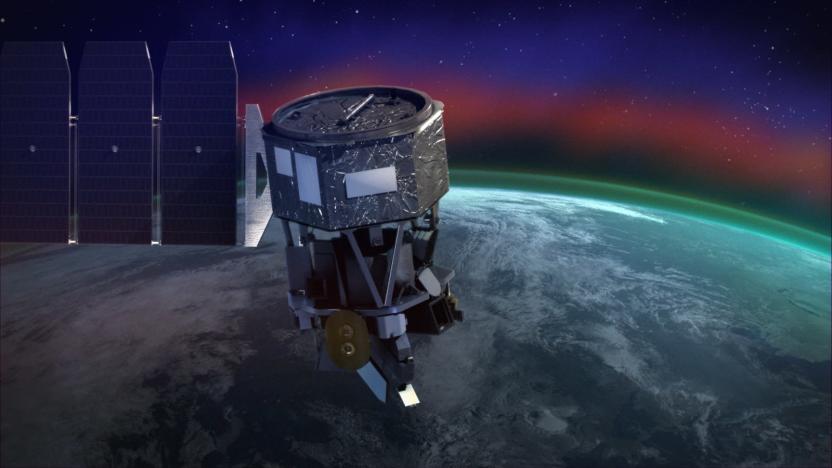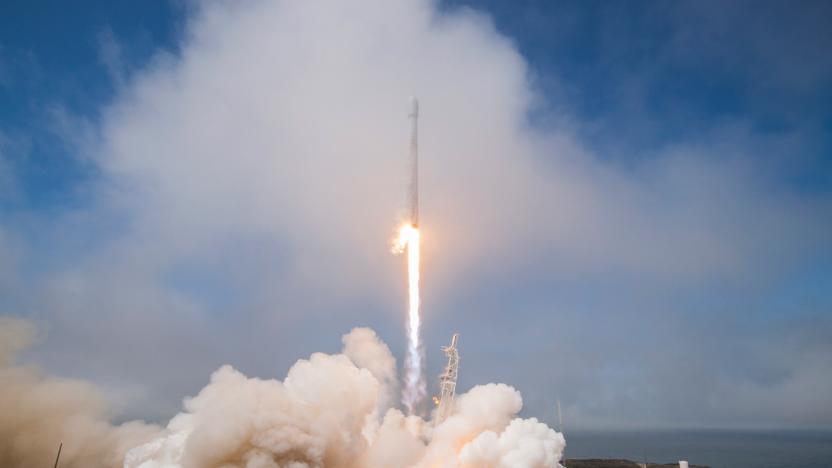ionosphere
Latest

NASA's ICON launches to study the boundary between Earth and space
NASA's Ionospheric Connection Explorer or ICON spacecraft is finally in orbit after years of delays and postponed launches. A Northrop Grumman aircraft carried ICON, which was strapped to a Northrop Grumman Pegasus XL rocket, to an altitude of 39,000 feet. At 9:59 PM EDT on October 10th, the carrier plane dropped the fridge-sized spacecraft, which has since deployed its solar panels. That means it has power, and it's all systems go for the long-delayed mission.

NASA ramps up its efforts to understand space weather
This week, NASA selected three proposals for missions that could help us better understand the Sun-driven space weather that occurs near Earth. Space weather, like solar flares, can impact spacecraft and astronauts, and it has the potential to disable utility grids on the ground. As NASA prepares to send more astronauts to space and we become increasingly reliant on technology, the need to protect both has become more pressing.

NASA's ICON launch to the ionosphere delayed (update)
Need something else to watch after all the results come in? Tonight NASA's launching a mission to explore Earth's ionosphere, but this isn't the average rocket launch. The Ionospheric Connection Explorer (ICON) will take off on a Northrop Grumman Pegasus XL rocket -- in use since the 90s, and scheduled for use with the giant Stratolaunch once that's ready to fly -- that's being dropped from a specially designed plane at about 40,000 feet over the open ocean. Dubbed Stargazer L-1011, the carrier aircraft will take off from Cape Canaveral ahead of a 90-minute launch window that opens at 3 AM ET. As Space.com notes, the launch has been delayed over concerns about the rocket, but all the testing is complete and now it's ready to fly.

SpaceX rocket carved giant hole in the ionosphere
Rockets can leave a mark on the atmosphere well after they've left, and SpaceX may have learned that first-hand. Researchers have determined that a Falcon 9 launch in August 2017 (the Formosat-5 mission above) not only created circular shockwaves, but cut a 559-mile hole in the plasma of the ionosphere that lasted for up to 3 hours -- it was akin to a localized magnetic storm. The phenomenon was produced by virtue of the rocket's light payload.

Pentagon plan to save endangered satellites not without risks
As you may or may not know (we sure didn't), all those satellites orbiting our little ball of blue are highly susceptible to traumatic events such as intense solar storms or space-based nuclear blasts, and would likely be crippled by the resulting swarm of charged particles. The big brains at the Pentagon are aware of this danger, of course, and have come up with a solution called "radiation belt remediation" that would employ even more sats to broadcast low frequency radio waves into particle filled areas, creating so-called wave-particle interactions that would encourage the pesky molecules to fall harmlessly into the Earth's upper atmosphere. Sounds like a great plan, except a team of researchers at New Zealand's University of Otago believe that all those charged particles in the ionosphere would absorb the vital communications signals that are normally supposed to be reflected back down to terra firma. Long story short, by saving the satellites, communications on the ground would be severely hampered, affecting everyone from military personnel to amateur radio hobbyists -- and in a worst case scenario, GPS signal quality and accuracy could be severely degraded, much to the dismay of the burgeoning geocaching community. Still, if this is the only option we've got in the face of a nuclear attack, losing ground -based communications for a week or so is a small price to pay in order to save hundreds of satellites; we can deal with our in-car sat nav systems acting screwy for a little while, but we must protect our ability to receive XM/Sirius and DISH/DirecTV broadcasts at all costs.



